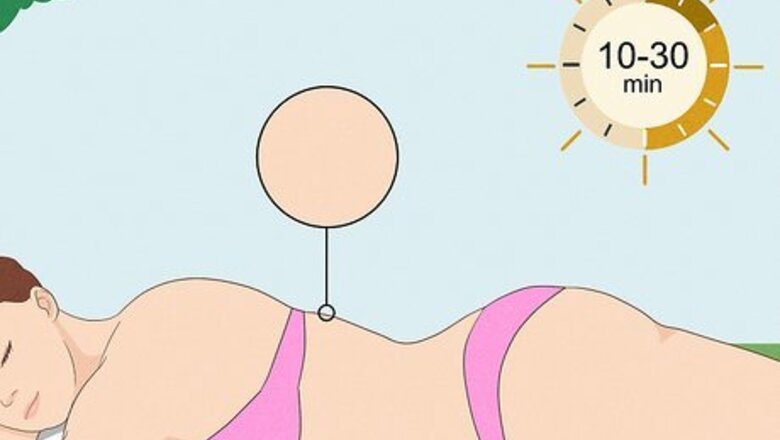
views
Is 30 minutes in the sun long enough to tan?

Yes, if you have fair to light skin. If you have light skin or very light skin, 10 to 30 minutes in the sun is a perfect amount of time for a tan. Much longer than that, and you could start to develop a sunburn.

No, not if you have light brown to dark brown skin. If your skin is olive-colored to dark brown, you’re probably going to need 40 to 60 minutes in the sun to start tanning. After that, you may develop a sunburn. If you have dark brown or black skin, you may not notice a change in your skin color after tanning. However, you can still develop a sunburn after 40 to 60 minutes.
Do you need direct sunlight to tan?
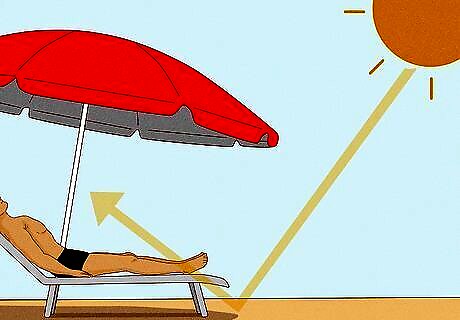
No, you can get a tan in the shade. UV rays can reflect off of the ground and onto your skin, even if you’re lounging in a covered area. Although it might take a little longer, you can still get a tan in the shade, so it’s important to put on sunscreen to protect your skin. Keep in mind that you can get sun exposure on a cloudy day, too. Just because you can’t see the sun doesn't mean it’s not shining.
Can you get a tan in one day?
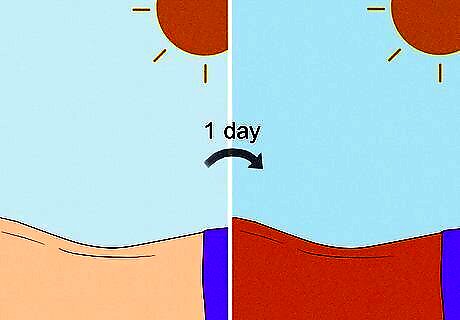
Yes, you can get a tan in one day. However, experts recommend tanning slowly over a 2-week period to avoid getting a sunburn. Try laying out for 10 to 30 minutes every day, and be sure to wear sunscreen when you’re outside.
Do you tan faster in the pool or laying out?
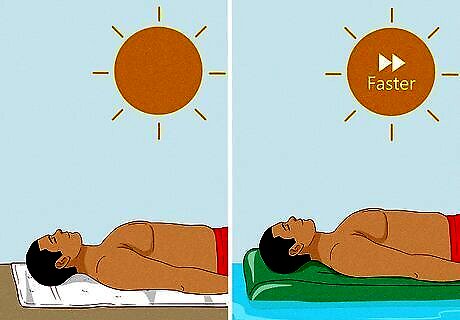
Floating on top of the pool can help you tan faster. The sun’s rays reflect off of water and onto your skin. This means that when you’re floating on top of the water, you’re getting a more intense exposure to the sun. Keep in mind that since you’ll tan faster in the water, you may need to take more frequent breaks and apply sunscreen earlier.
How safe is it to tan?

Tanning in short bursts is generally okay, but there is no “healthy” way to tan. Dermatologists warn that tanning in any form will cause injury to your skin, even if it’s just a small tan. Every time you get a tan, you are hurting your skin a little bit—that’s why it’s so important to wear SPF and avoid sun exposure when you can. If you tan often and for long periods of time, you could experience leathery skin, wrinkled skin, or dark spots. Tanning too much also increases your risk of skin cancer.
What is the safest way to tan?

Use a broad-spectrum SPF 15 to 30 sunscreen. Broad-spectrum sunscreen protects against both UVA rays and UVB rays, which is important when you’re in the sun. Be sure to reapply your sunscreen every 2 to 3 hours, or more often if you’ve been swimming. There are 2 types of sunscreen: physical blocking and chemical. Physical blocking sunscreens have zinc and titanium, and start protecting your skin right away. Chemical sunscreen takes 20 minutes to soak into your skin, and doesn't provide instant protection.
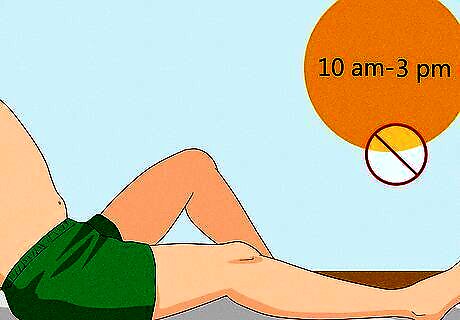
Stay out of the sun when it’s most intense. For most of the United States, this is between 10 am and 3 pm. During this time, it’s really easy to get a sunburn, and you might not even feel it happening until it’s too late.
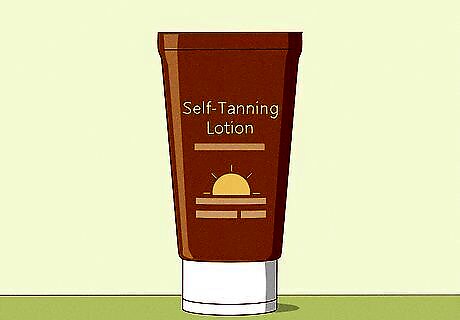
Try a self-tanning lotion for a sunless tan. If you love the look of tanned skin but you want to skip the harmful UV rays, self-tanning lotion is the way to go. These lotions temporarily stain your skin, making it look like you’ve been tanning for a while. Keep in mind that self-tanning lotion doesn’t protect against the sun, so you’ll still need to wear sunscreen when you go out.
How do you care for your skin after tanning?

Moisturize your skin. Laying out in the sun can dry your skin out, leading to itchy, flaky spots. Use a mild, fragrance-free lotion or moisturizer all over your body to hydrate and repair your skin after tanning.
Is indoor tanning safer than outdoor tanning?
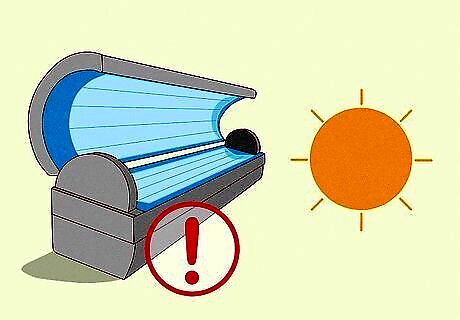
No, indoor tanning is much more dangerous than tanning outdoors. Indoor tanning devices, or tanning beds, use UV rays that are as intense or more intense than the sun. Studies show that using an indoor tanning bed puts you at a much higher risk for skin cancer, especially if you use these services regularly.




















Comments
0 comment